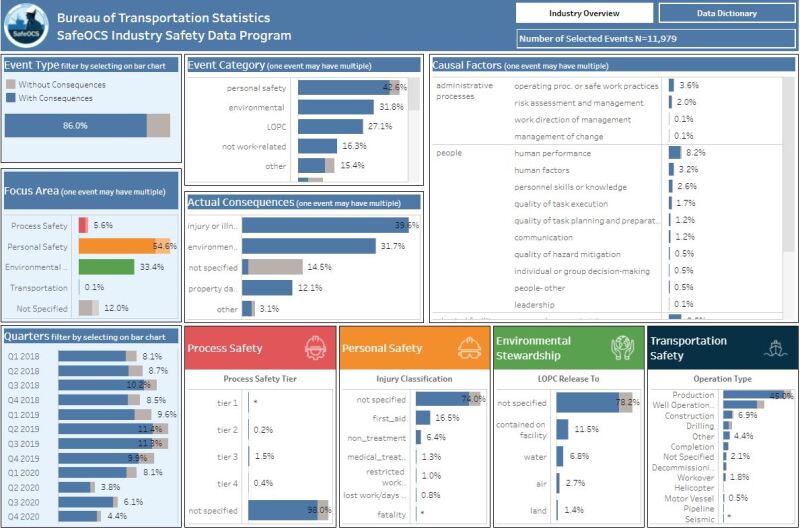A new web-based dashboard for advancing safety in oil and gas operations on the Outer Continental Shelf (OCS) is now available to industry and the public as part of the SafeOCS Reporting System from the Bureau of Safety and Environmental Enforcement (BSEE) and the Bureau of Transportation Statistics. The dashboard is designed to increase transparency and improve the ability to follow trends, improve inspection planning, understand common factors, and see meaningful relationships in process safety, personal safety, and environmental stewardship on the OCS.
“BSEE’s commitment to safety is enhanced by new initiatives, like this dashboard, which proactively identifies trends that can help mitigate risks and save lives,” said Stacey Noem, chief of BSEE’s Office of Offshore Regulatory Programs. “BSEE supplied data and information from our records to develop this dashboard, which is a huge accomplishment for making offshore oil and gas safety data more transparent and accessible.”
The SafeOCS dashboard represents data collected from 2018 to 2020 and represents more than 11,900 consolidated voluntarily reported events, including stop cards, incident reports, event narratives, and contractor and operator information. It also allows operators to compare their confidential submissions with aggregated data from all participants to better identify safety risks and address them before an incident occurs.
Working closely with the BTS and industry, BSEE began the SafeOCS program in August 2013 for confidential reporting of safety data, including near misses, occurring on the OCS. All reports are analyzed but protected from release under the Confidential Information Protection and Statistical Efficiency Act.

